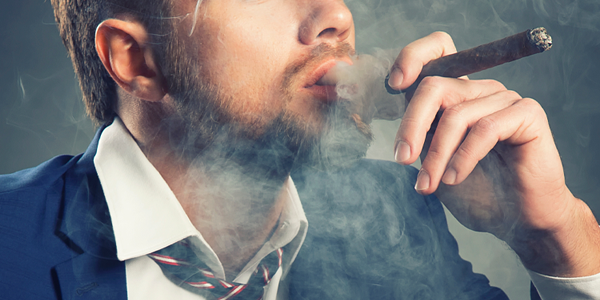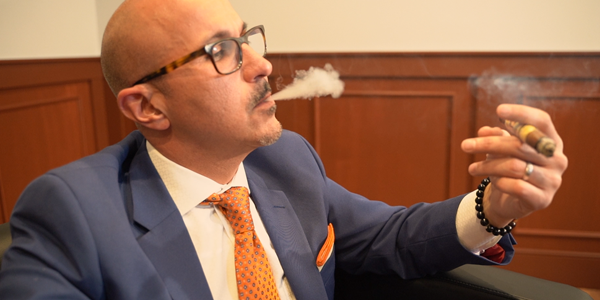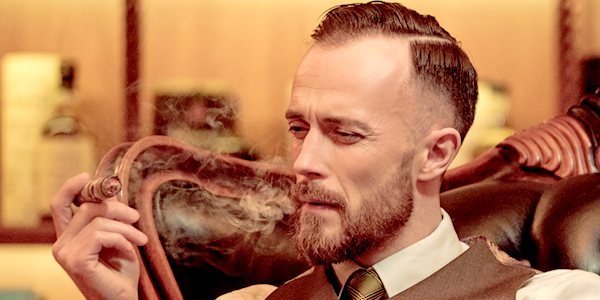Phases of Tasting Cigars
When you smoke a cigar, the initial flavors you taste are often different from the notes you pick up in the middle and at the end. A cigar’s taste changes as you smoke it. Our dedicated team of aficionados at Holt’s cranks out a regular schedule of staff reviews featuring a wide variety of cigars in our inventory along with our personal favorites. We break down the basic tasting notes, appearance, and construction of every cigar we smoke. When you’re learning how to smoke cigars, here’s what to expect as you develop your palate and become acquainted with the phases a cigar goes through from beginning to end.
Common Tasting Notes
The most common tasting notes in a premium cigar include nutty, sweet, vegetal, woody, spicy, coffee, and natural, or earthy, flavors. The tobaccos that go into a cigar – binder, filler, and wrapper leaf – determine the cigar’s flavor profile. Each of these elements is assembled by an expert cigar-maker who invests years in fermenting and aging the tobaccos to achieve peak flavor and smoothness before uniting them into the hand-rolled works of art we smoke. Cleanse your palate before you smoke, especially if you’re smoking more than one cigar in a day.
Smell a Cigar before Lighting It
When you pull a cigar from a fresh box, slide it out of the cellophane and smell it from head to foot before you cut and light it. Different wrapper varietals, like Connecticut Broadleaf, Ecuador Sumatra, San Andrés, and Ecuador Habano reveal distinct aromas. Gently press the cigar’s unlit foot to your nose and take a deep sniff of the raw tobaccos. You might smell cedar, leather, chocolate, earth, or pepper. You can perceive a cigar’s forthcoming sweetness, spiciness, and strength.
Cold Draw
After you cut the cap on a cigar, put it in your mouth and puff on it a few times before lighting it. This is called the cold draw. The cold draw is like a sneak preview of what’s to come. You can taste a cigar’s wrapper leaf in its raw, unlit state. The cold draw also lets you know air will flow through your cigar free of obstruction. If a cigar pulls too tight before you light up, you may have to cut it a little deeper.
Light Your Cigar Slowly
Whether you’re using matches or a torch lighter, light your cigar slowly, and don’t hold the flame too close to the foot. This way, you’ll avoid getting a charry taste from burning the tobaccos too aggressively in the first puffs. Rotate the foot over the flame. The first puffs can be slightly abrasive until the binder, filler, and wrapper are fully lit and combusting at an even pace.
Beginning, Middle, and End
A lot of cigar smokers like to characterize a cigar’s taste by dividing it into thirds: beginning, middle, and end. A cigar’s size influences its intensity greatly. Thinner cigars burn hotter and faster than thicker sizes, and longer cigars start off milder but finish stronger than shorter shapes.
Once you’ve got an even burn going, the beginning of a cigar will be the mildest portion in most cases. This is because the smoke is traveling – and cooling as it travels – before it reaches your palate. Cigars with a lot of complexity start off creamy and become spicy or vice versa. The taste of a complex cigar changes while you’re smoking, and it will stimulate different areas of your palate. Less complex cigars maintain the same tasting notes from beginning to end, and they simply become more intense as the heat from the cherry draws closer to your palate. You can experience a cigar’s aroma directly when you retrohale, or blow the smoke out through your nose.
The end of the cigar – or the nub – is where a cigar can really taste its best or, conversely, become too strong to finish. The heat and the oils in a premium cigar culminate in the final inches after you’ve removed the band. When you reach the end of the best tasting cigars, you can’t resist smoking the nub. Be careful handling the nub so as not to burn your fingers or your lips when you take a draw or ash the cigar. If a cigar has become unexpectedly overpowering toward the end, you’re better off letting it go out if you’re beginning to feel nauseous.
Aftertaste
The flavor from a mild beginner cigar will depart your palate as soon as you’re done smoking. Stronger, more robust cigars can linger on your taste buds for some time. A long finish is desirable when you’re sipping a good bourbon or scotch with a cigar because you can continue to savor the two together after your cigar has expired.
Trust Your Taste
A blind tasting – or smoking a cigar without its band or knowing the manufacturer – is a great way to focus on the taste of a cigar without any preconceived notions about the brand or cigar-maker. And a vertical cigar tasting is an opportunity to taste how size makes a difference in the beginning, middle, and end of a cigar.







